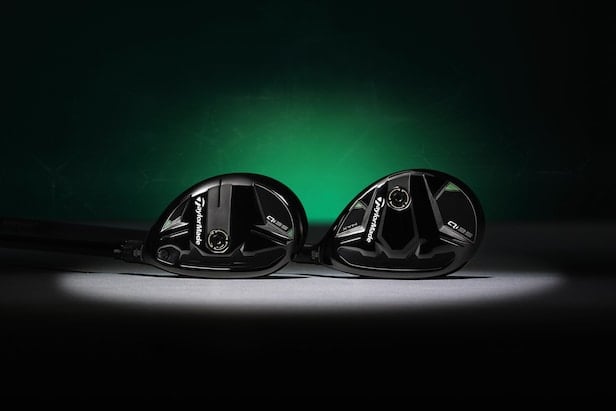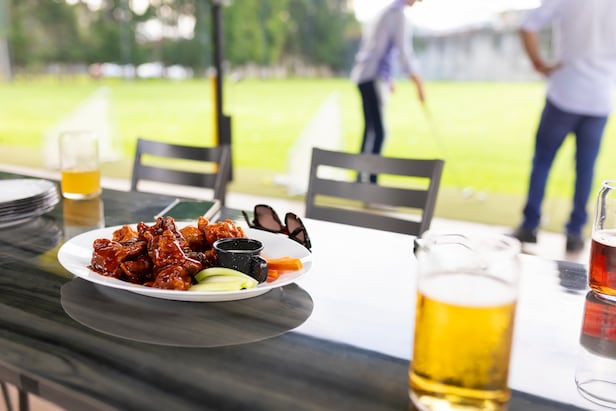Play Your Best: Claw Your Way Back – Australian Golf Digest

- by Admin
- July 23, 2024

In a slump on the greens? It might be time to use this grip
It has been nearly 20 years since Chris DiMarco nearly beat Tiger Woods in a playoff at the Masters, putting with an unusual grip known as “the claw”. Since then, dozens of players have used a variation of it including Phil Mickelson, Collin Morikawa and Tommy Fleetwood.
Unlike a traditional putting grip, in which both palms face each other on the sides of the handle, a claw grip entails holding the club with your right hand’s palm rotated inward, facing your body. The putter is pinched between the thumb and forefinger, so very few fingers on the right hand make contact with the club. This reduces that hand’s involvement in the stroke, which helps keep the putterhead square at impact.
The claw grip isn’t for everyone. In my experience, it tends to best suit golfers with a thick chest and more rounded posture, and most importantly, those whose palms face their thighs. Most people’s palms naturally hang only slightly inward, and those golfers are usually better suited to hold a putter with a traditional grip. However, if your hands face inward and you putt with a standard grip, the right hand tends to seek out its most natural position, which can twist the forearm and putterface closed. This leads to the left miss – a pull- – and a lack of smoothness in the putting stroke. Many golfers mistakenly think it’s a sign of the dreaded yips. In reality, it’s just a setup flaw.
If you pull a lot of putts, the claw might help you. Turn the page and read on to find out how.
Steve Buzza, a Golf Digest Best Young Teacher, is director of instruction at Brook Hollow Golf Club in Dallas, Texas.
Test: Look to your knuckles
How do you know if the claw is right for you? Without a club, allow your arms to hang naturally from your shoulders and look down at your knuckles. If they point directly away from you and your palms face your thighs [above], you could benefit from the claw. If the knuckles on your left hand point towards the target and your palms face one another, you’re probably better sticking with a traditional grip or trying another way to hold the club.

Grip: Form a paddle
Almost every player on the professional tours who uses the claw has their own version of it. I prefer my
fingers make as little contact with the handle as possible, which quiets the right hand and puts more emphasis on the arms and shoulders in the stroke.
Take your normal left-hand grip, resting the putter in the palm of that hand. Now straighten the fingers on your right hand so you’re effectively creating the look of a paddle [above]. Keeping the fingers straight and relaxed, slip the handle in between your thumb and forefinger. Apply some light pressure on the top of the handle with your index and middle fingers – just enough so that you can control the club – and make sure that the back of your hand and forearm form a straight line. This way, the putter will swing back and through on one plane, like a pendulum.

Why it works: Change can be good
In addition to the claw promoting more of a torso-driven stroke and quieting the role of the hands [above], it also tends to feel more comfortable for golfers with rounded postures who struggle to hit putts smoothly. It improves distance control by helping to negate that bad feeling of needing to give the ball a whack to get it to the hole.
Also, switching to a grip so different than the usual way you hold the putter creates an entirely new feel and motor pattern – one that doesn’t come with all those bad memories about the putts you’ve missed in past rounds.
Photos by Jensen Larson
The Latest News
-
January 8, 2025TaylorMade Qi35 hybrids: What you need to know – Australian Golf Digest
-
January 8, 2025South Australia leads the nation with a surge in job vacancies, outperforming other states
-
January 8, 2025Cleveland RTZ wedges: What you need to know – Australian Golf Digest
-
January 8, 2025New data shows golfers might be ditching this halfway-house staple – Australian Golf Digest
-
January 8, 2025Nurses, delivery drivers to be among Australia’s most in-demand jobs by 2030





